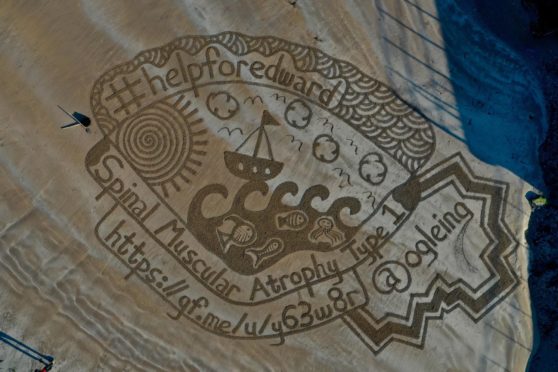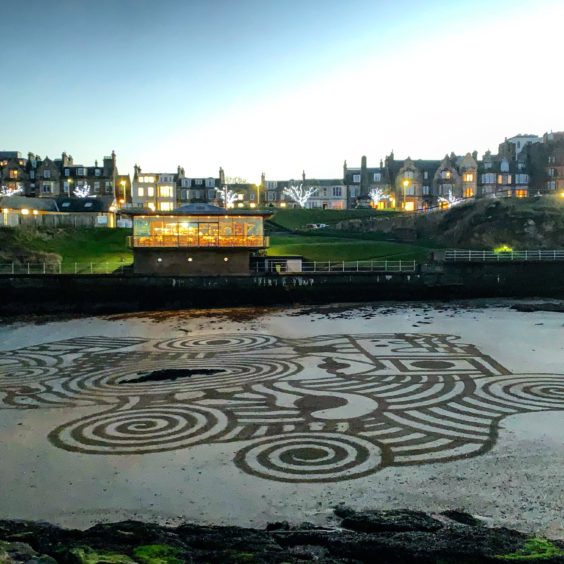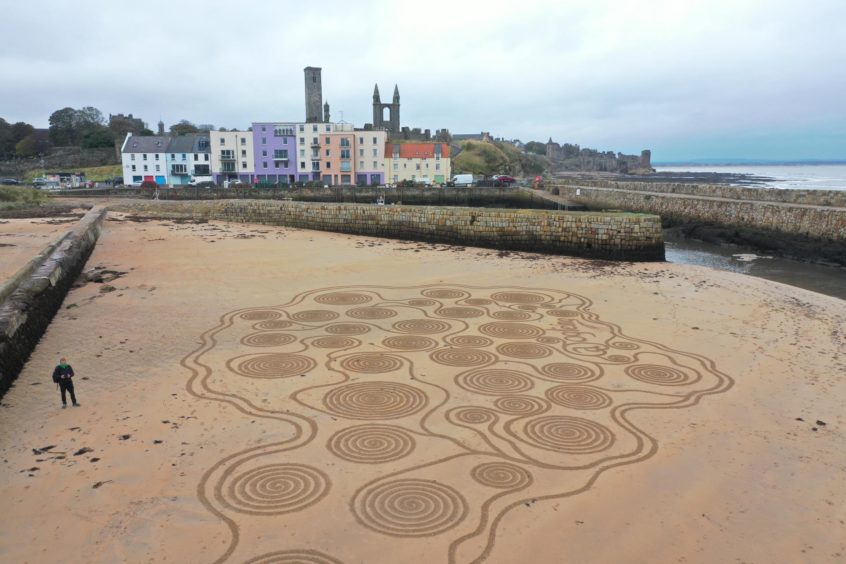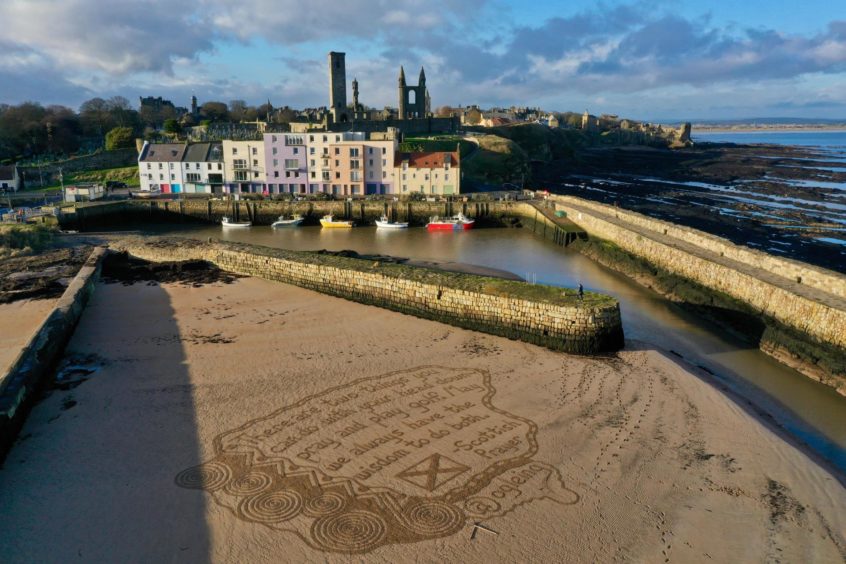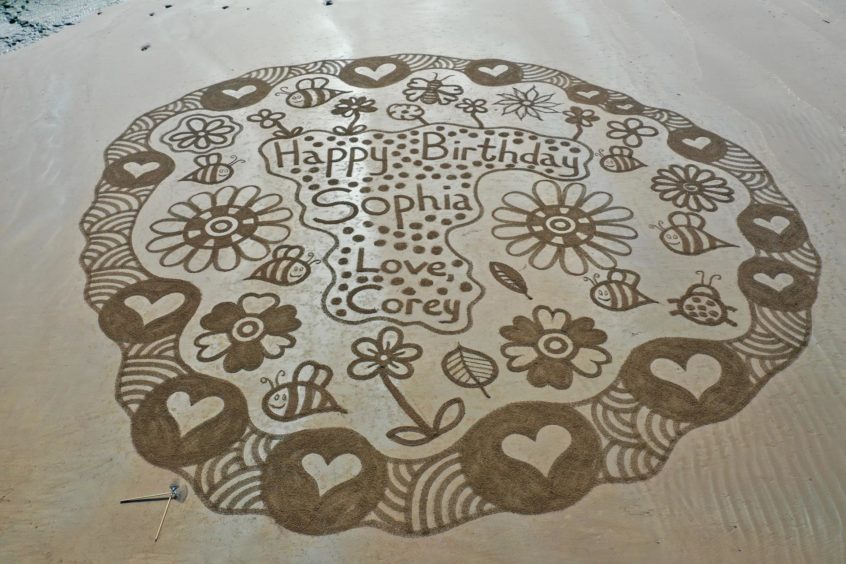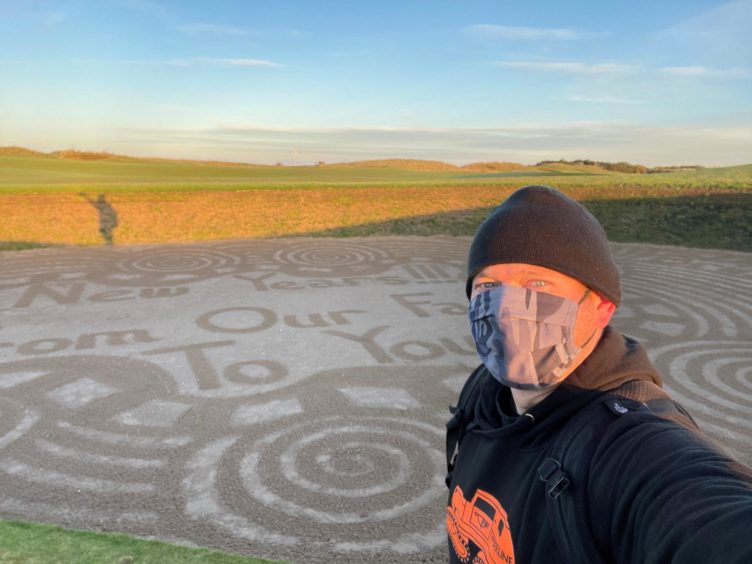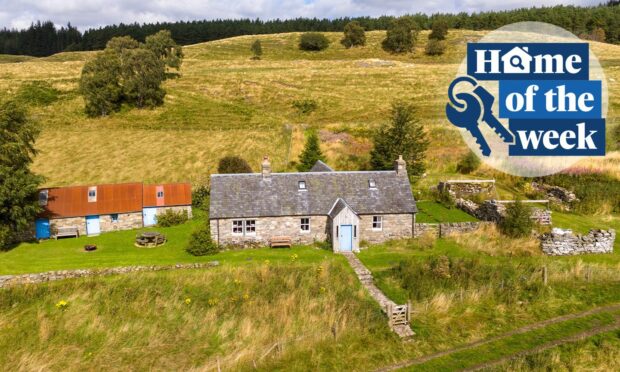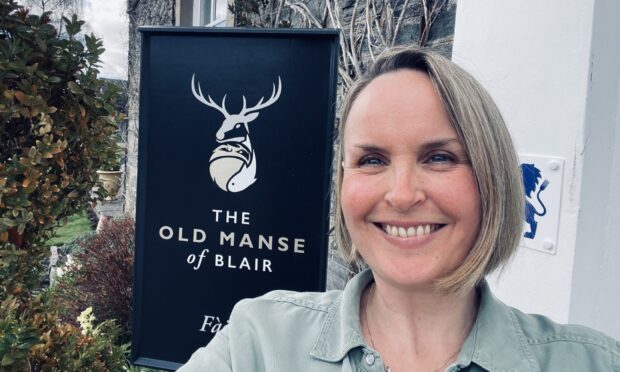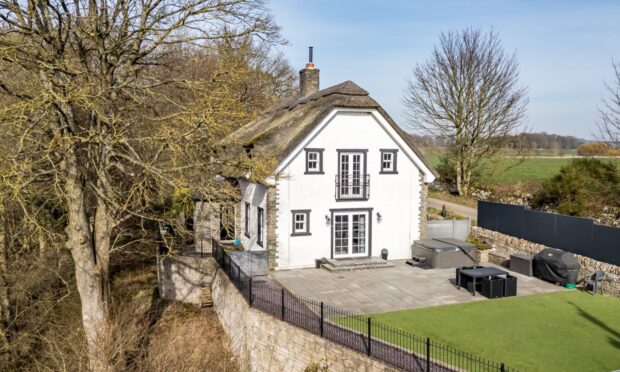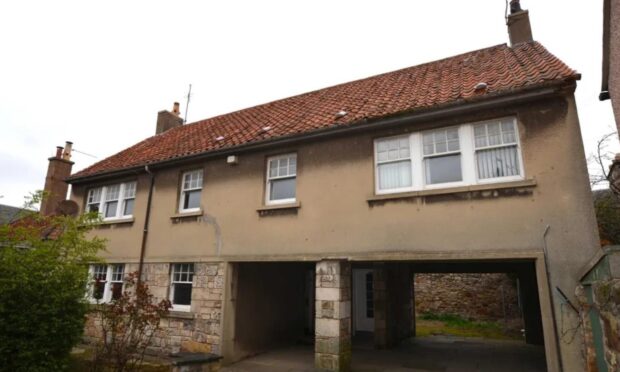The shifting sands of St Andrews’ beaches make the perfect canvas for sand artist Rob Ogle III. Nora McElhone found out how he creates art on a grand scale.
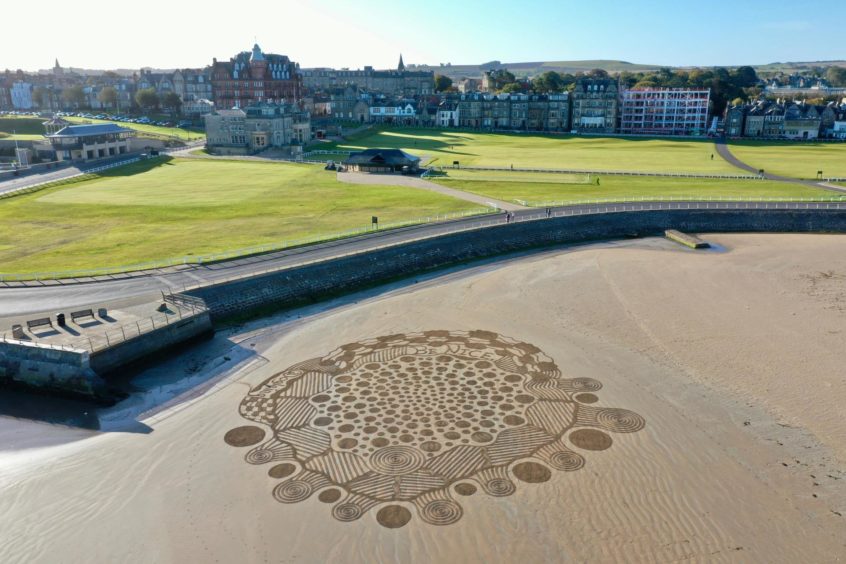
From green-keeping to caddying, Rob has had his fair share of experience of working with sand but lockdowns and its associated restrictions have given him the chance to explore a more artistic side to the material.
The 35-year old American was born and raised in Portland, Oregon and now lives in North East Fife with his wife Hailey and four-year old son Hudson. His fascination with creating art in sand began, “when I worked on the grounds crew at Portland Golf Club. A friend and I would rake patterns and it actually helped to ‘stir up’ the sand so it was a green light from everyone.”
Beach art inspiration
He also found inspiration in the work of fellow Oregon resident and labyrinth artist Denny Dyke. Denny works under the title Circles in the Sand and uses the beaches of Bandon as a canvas for his designs, which include paths that can be walked by visitors until they are washed way by the tide. Rob also admires the work of Jon Foreman who creates designs with sand and stones and French Canadian J.Ben
Having grown up around an hour’s drive from the coast, Rob says that, “it has been part of my life forever. It has a calming effect and I have always respected the power of the sea as ‘the tide waits for no man or woman’. I think people, including myself, are attracted to the sea because it’s just so big and makes you appreciate the little things in life.
The opportunity to try out some sand art of his own on a big scale presented itself to Rob earlier this year when the first lockdown meant that he wasn’t able to work as a caddy. Many of this designs are centred around quotes or messages and when it comes to creating new pieces, he explains that; “The ideas for sand art really are organic. If there is certain text, I usually start with that and then let my rake/mind/music take the lead.”
The equipment required to create these huge patterns is surprisingly minimal. “I typically only use two rakes,” Rob explains, “one small tined for text and one big for colouring and shading. I will use a piece of string and bamboo stick if the design requires a straight line or perfect circle. As for proportions, it’s really just a guessing game and you get a bit of visual help from the ground but it always is surprising when I send the drone up and see it for the first time.”
Rob is a certified and licensed drone pilot and he uses his DYI Mavic Pro to capture stunning footage of his sand art and the surrounding landscape. “I always fly safely and responsibly,” he adds.
When it comes to making art on the beach, the wind is his biggest challenge. “Any west wind over 20-25mph will sweep the art away. The tides are a bit challenging, but I’ve learned about slack/king tides to help my progression.”
For many creative people, the final outcome of having something tangible to cherish, gift or even sell is the culmination of their hard work, so how does Rob feel when the North Sea comes over the beach and erases his designs? “I don’t really mind the art being washed away,” he explains. “I’m glad that the people who get to see it enjoy it, and I am able to capture them with the drone so I am content with that. Plus I get a free and clean “canvas” every time I go out,” he adds optimistically.
He has got to know regular beach-goers over the past months and to be able to share his passion with them. “I love it when people let me know they appreciate the art. I have a couple of ‘regulars’ – runners and walkers that talk to me on a consistent basis, socially distanced of course. I get lots of enjoyment knowing people will get to see the piece until the tide washes it away.”
He says that someone has described his work as: “like a ‘Sand Banksy’, but I don’t compare myself to him/her. I hope the sand art can let people relax, enjoy, and maybe even surprise them a bit with the size, technique, or message. It’s unique but that’s why I love it.”
When it comes to favourite projects he explains, “I can’t say I love any one piece more than the other, but I do enjoy when new “technique” is learned or discovered. For example, when I learn a new text font, a new shading technique, or when a piece turns out to be bigger than anticipated. A few pieces have been re-posted or re-shared, the biggest one being when Major US sports media company Barstool Sports retweeted a piece of mine. My goal is to have people enjoy the art how they see it and the concept that nothing is permanent (sand art gets washed away every time) so do what makes you happy or else you’ll look back on life with regret and never live to your full potential.”
Old Course commission
Not of all his works of art have been created on local beaches. Rob was delighted to be invited by the Links Trust to complete a New Year’s message in the Shell Bunker on the famous Old Course. “They didn’t really give me any rules, just a New Years message,” he enthuses. “I completed it on a freezing and beautiful Tuesday morning and it lasted almost until the weekend. It was very cool and I’m proud to say that that is in my portfolio. I have another Old Tom Morris piece to do soon and I aspire to do something for the 150th Open, when it comes to St. Andrews!”
Looking to the future, the American doesn’t see himself giving up his work as a caddy any time soon but would love to develop the sand art as much as he can. “I love sand art and if it turns into a full time career, that would be great,” he explains. “I will always want to caddie, but with the the future being so uncertain, I will take advantage of any opportunities as they arise. It’s not quite a dream come true, but I’m working hard at making it become that and I appreciate all the support I have had from everyone, especially St Andrews Photo Corner Facebook group.
Find more of Rob’s work on his Instagram page.
